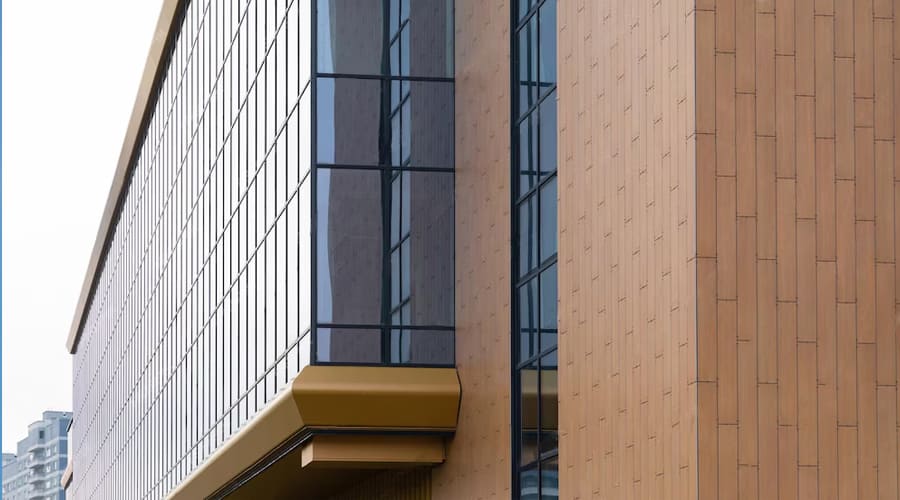
Facade cladding systems are exterior coverings applied to the walls of buildings to protect them from weathering, enhance aesthetics, and improve energy efficiency. These systems come in various materials, designs, and installation methods to suit different architectural styles and functional requirements. Here's an overview of facade cladding systems:
Materials
Metal Cladding Common metals used for cladding include aluminum, steel, zinc and copper. Metal cladding offers durability, weather resistance, and a sleek, modern appearance. It can be installed in the form of panels, shingles, or composite sheets.
Composite Panels Composite cladding systems consist of a combination of materials such as wood, plastic, and fiber cement. These panels offer versatility, durability, and a wide range of design options. Glass Cladding Glass cladding systems utilize glass panels or curtain walls to create transparent or translucent facades. Glass provides natural light, visual transparency, and a modern aesthetic but may require specialized engineering for structural support and insulation.Design and Installation
Facade cladding systems are designed and installed to meet aesthetic, functional, and performance requirements.
The design process involves selecting suitable materials, colors, textures, and patterns that complement the building's architecture and surroundings.
Cladding panels are installed over the building's structural framework using various methods such as mechanical fastening, adhesive bonding, or interlocking systems.
Proper detailing, weatherproofing, and insulation measures are incorporated into the cladding system to ensure durability, thermal performance, and resistance to water infiltration.
Benefits
Weather Protection Facade cladding systems shield buildings from rain, wind, UV radiation, and temperature fluctuations, prolonging the lifespan of the underlying structure.
Aesthetics Cladding enhances the visual appeal of buildings, allowing architects to achieve diverse styles, textures, and colors to suit the design intent.
Energy Efficiency Some cladding materials offer thermal insulation properties, helping to regulate indoor temperatures, reduce heating and cooling costs, and improve occupant comfort.
Durability and Maintenance Cladding materials are selected for their durability, resistance to corrosion, fading, and low maintenance requirements, reducing the need for frequent repairs and upkeep.
Facade cladding systems play a crucial role in defining the appearance, performance, and sustainability of buildings, making them a key consideration in architectural design and construction.
- All Services
- Curtain Wall Facade Systems
- Point-Fixed Glass Facade Systems
- Skylights, Roofing And Canopy Systems
- Automatic Doors & Store Front Systems
- Facade Cladding Systems
- Aluminium Doors And Windows Systems
- Facade Sun Control Louvers And Fin Systems
- Custom facade Remodeling
- Facade Design-Build Services
- Facade GlazingShop Drawing, Calculation and Wind Load Analysis Services